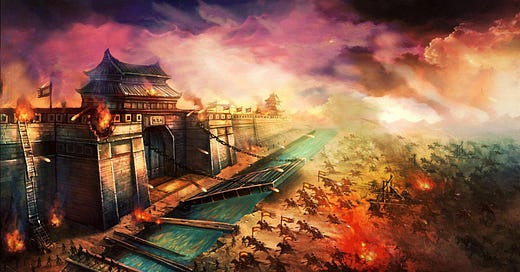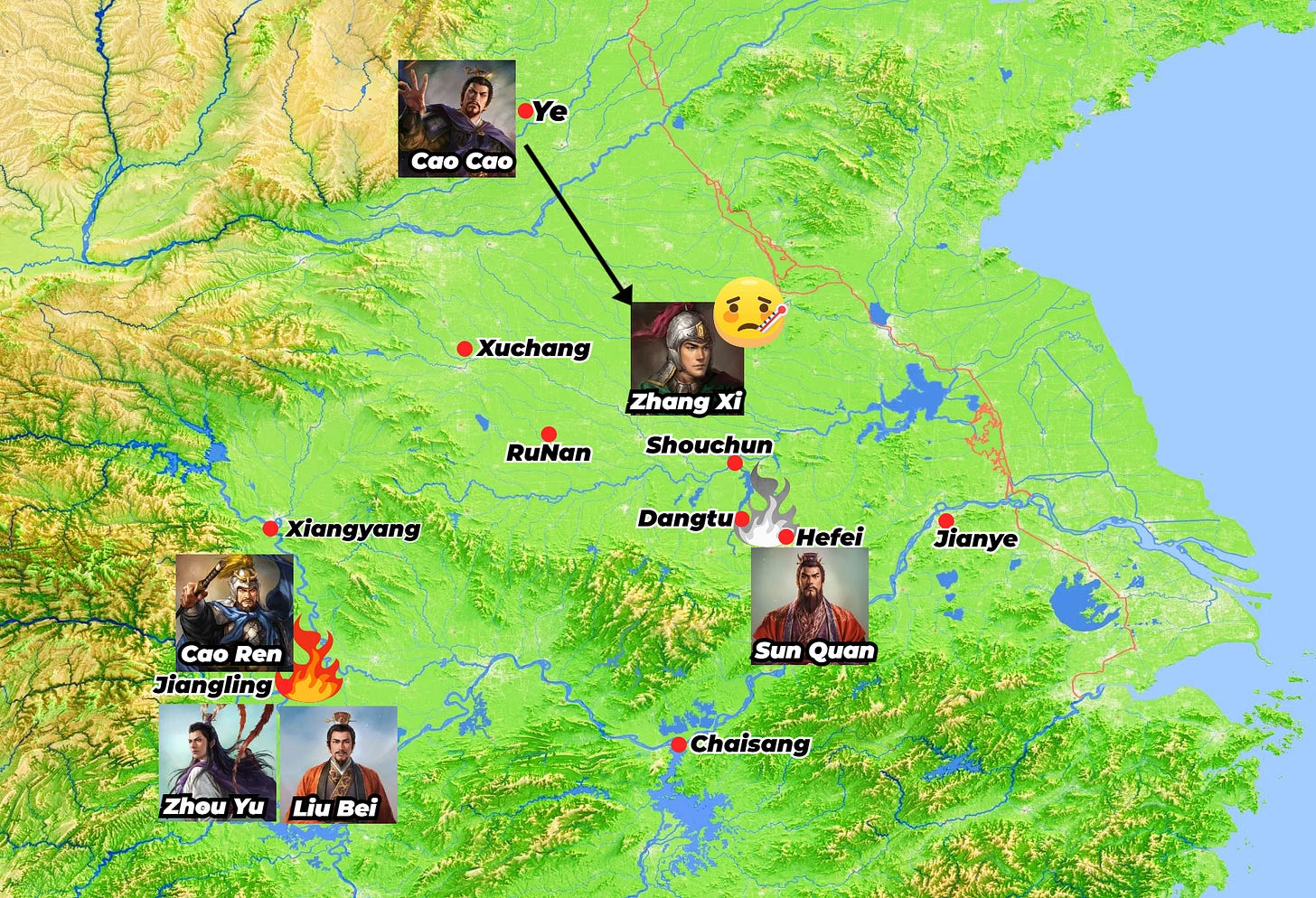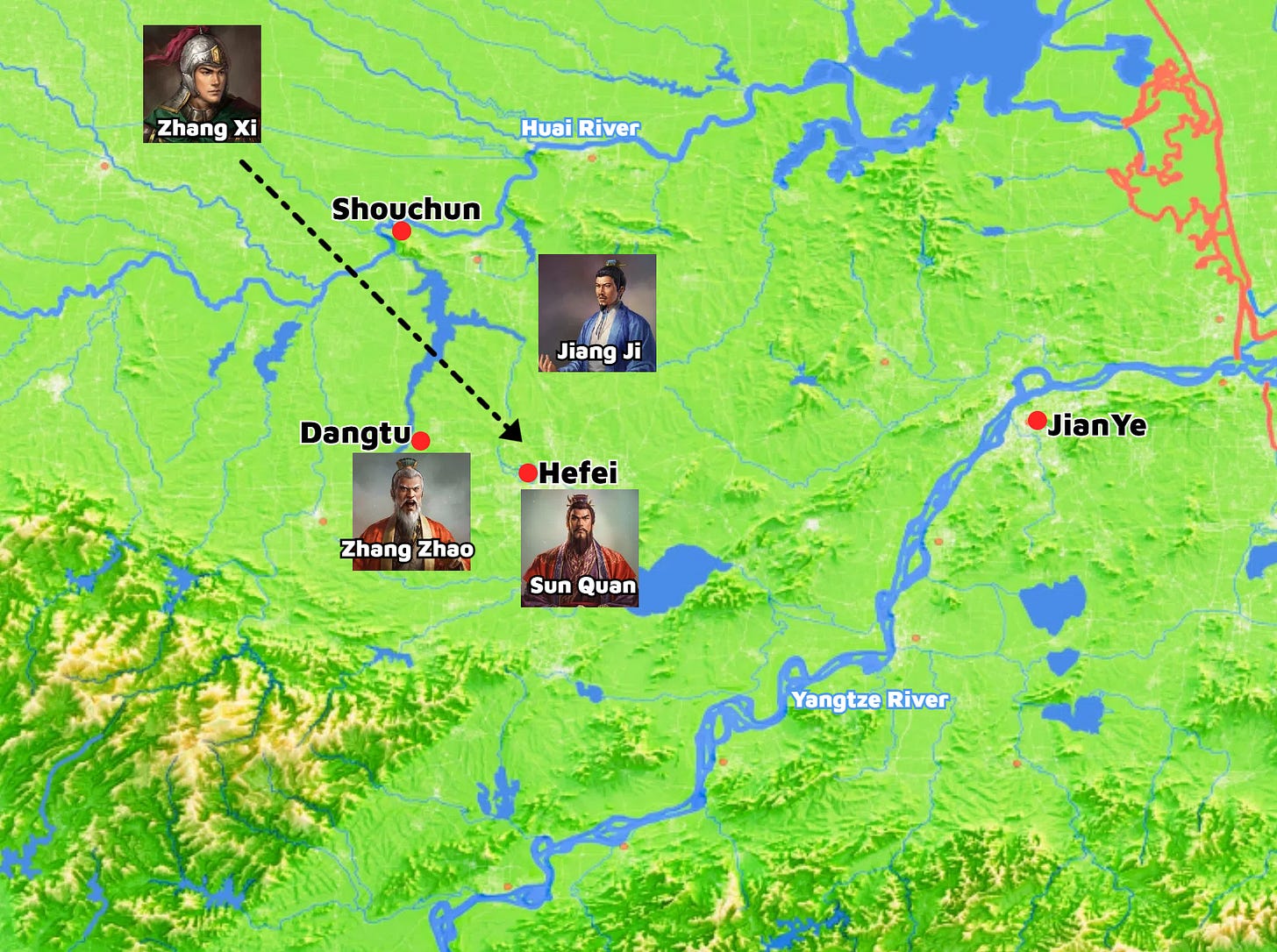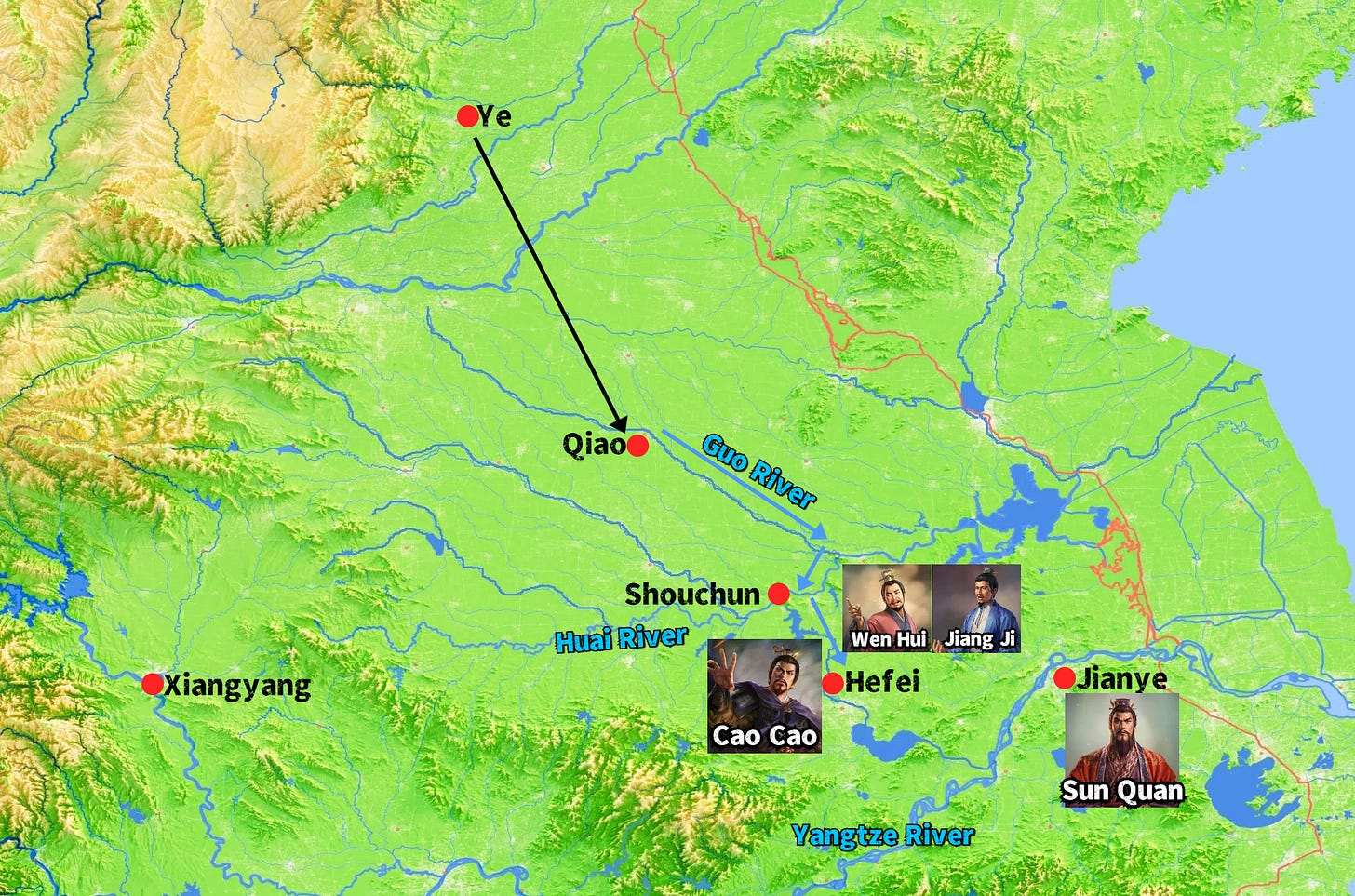Previous Chapter :Why Hefei is the Only Choice in Sun Quan's Northern Campaigns 2
Catalog of Three Kingdoms’ history
In 208 AD, before the Battle of Red Cliffs, Liu Fu刘馥, the Provincial Governor of Yangzhou under Cao Cao's command, passed away in Hefei合肥.
In December of the same year, Cao Cao suffered a crushing defeat at Red Cliffs and retreated to Jiangling江陵 before eventually returning north to Ye邺. Zhou Yu周瑜 and Cheng Pu程普 pursued him to the walls of Jiangling, joining forces with Liu Bei to lay siege to the city.
Meanwhile, to support the western front and, more importantly, to establish a connection between the Yangtze and Huai River waterways, Sun Quan personally led a mighty army to attack Hefei—marking his first time arriving at the city's gates. While he personally directed the siege, he also sent Zhang Zhao张昭 with a separate force to attack Dangtu当涂.
At this time, Cao Cao had just suffered the devastating loss at Red Cliffs, with his forces severely depleted. Most of his remaining troops were stationed in key locations such as Xiangyang襄阳 and Jiangling in northern Jingzhou, leaving him with no real ability to reinforce Hefei. As a result, he could only dispatch his officer Zhang Xi张喜 with a little over 1,000 cavalry and some hastily recruited local militia from Runan汝南 to attempt a relief.
However, the plague that had been spreading among Cao Cao’s troops worsened. Zhang Xi’s men fell ill in large numbers along the march, forcing them to halt. With no other options, Cao Cao had no choice but to leave Hefei to its fate.
Fresh from the disaster at Red Cliffs, Cao Cao’s army was not only weakened in numbers but also demoralized, with the shadow of the plague lingering. Sun Quan, seizing the momentum, launched a counteroffensive, displaying clear ambitions to push into the Middle Land.
Cao Cao’s defensive pressure was now concentrated on two critical fronts: Jiangling in the west and Hefei in the east. Losing Jiangling would mean surrendering all of southern Jingzhou, while the fall of Hefei would open the floodgates to the lands south of the Huai River淮河. Thus, the winter of 208 AD felt agonizingly long for Cao Cao.
Yet, by March of 209, after Sun Quan had besieged Hefei for over 100 days, the city still held firm. Sun Quan and Zhang Zhao proved equally unimpressive in their military command—neither could mock the other for incompetence. Sun Quan grew increasingly frustrated outside Hefei’s walls, while Zhang Zhao, failing to capture Dangtu, angrily withdrew.
The late Inspector of Yangzhou, Liu Fu, had previously stockpiled large quantities of straw and palm-leaf mats, as well as thousands of jars of fish oil, in the city. When heavy rains threatened to erode the walls, the defenders used the mats to shield them from water damage. At night, they burned the fish oil for illumination, preventing Sun Quan from launching any surprise attacks.
Thus, despite being completely encircled, Hefei stood unshaken, infuriating Sun Quan to the point where he considered emulating his brother Sun Ce’s boldness by leading a personal assault on the walls. However, his Chief Clerk长史, Zhang Hong张纮, urgently advised: "Charging into battle is not the duty of a commander! You must uphold the ambitions of a true ruler, not the recklessness of a mere warrior!" Sun Quan reluctantly relented.
Meanwhile, Jiang Ji蒋济, the Assistant Governor of Yangzhou stationed outside the city, realized that reinforcements were not coming and that they could not rely on external aid. So, he devised a stratagem.
He sent a secret letter to the newly appointed Governor of Yangzhou inside Hefei, stating:
"General Zhang Xi has arrived nearby with 40,000 infantry and cavalry. Please dispatch officials immediately to receive them!"
Jiang Ji made three copies of the letter and sent three messengers to infiltrate the city. Only one succeeded; the other two were captured by Sun Quan’s forces. When Sun Quan read the letter, he took it at face value. In a panic, he ordered his troops to burn their camps and retreat southward via the waterways, bringing the First Battle of Hefei to an end.
This battle deeply impacted Cao Cao, making him realize the strategic importance of defending Hefei and exposing his navy’s inferiority.
In March of 209, after Sun Quan’s withdrawal, Cao Cao traveled to his hometown of Qiao谯 County to personally oversee the construction of warships and the training of naval forces.
By July, he sailed down the Guo涡 River to Hefei, appointing his trusted subordinate Wen Hui温恢 as the new Governor of Yangzhou, with Jiang Ji assisting him. He also compensated the families of fallen soldiers and remained in Hefei for over five months before returning.
Sun Quan, however, understood that without capturing Hefei, he would remain trapped along the Yangtze River. He was far from giving up.
"Hefei… Hefei! I *will* be back!"
To be Continued.
Your support is my greatest motivation!







